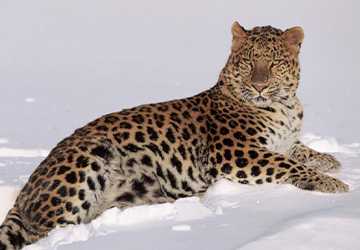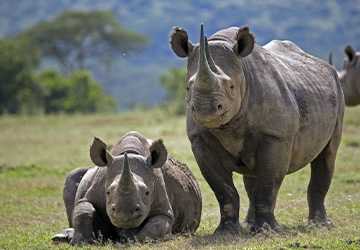Top 10 Endangered Animals and How to Help Them
Many species are teetering on the brink of extinction in the vast tapestry of life that adorns our planet. The causes of their endangerment vary from habitat loss to poaching and climate change. The impending extinction of these remarkable creatures diminishes Earth's biodiversity and disrupts delicate ecological balances. However, there's hope on the horizon, for we can play an extraordinary role in preserving and protecting these endangered animals. This article will explore the top 10 endangered animals and discover how we can contribute to their survival.

Amur Leopard (Panthera pardus orientalis)
The Amur leopard, often called the "Phantom of the North," is one of the world's most critically endangered big cats. With an estimated 84 individuals left in the wild, these magnificent creatures face an alarming threat to their existence. Primarily found in the temperate forests of Russia and China, the Amur leopard's habitat is rapidly shrinking due to logging, development, and human encroachment.Supporting conservation efforts is crucial to help these enigmatic creatures. Donations to organizations working to protect the Amur leopard's habitat and prevent poaching can make a significant impact. Additionally, spreading awareness about the plight of these big cats and supporting eco-friendly initiatives can go a long way in ensuring their survival.
Vaquita (Phocoena sinus)
The vaquita, the world's smallest porpoise, is on the verge of extinction. With fewer than ten individuals remaining, their situation is dire. These tiny, elusive porpoises inhabit the Gulf of California, Mexico, and are often accidentally entangled in illegal gillnets meant for another critically endangered species, the totoaba fish.To help the vaquita, one of the most pressing actions is to support sustainable fishing practices and advocate for enforcing regulations that protect their habitat. This involves raising awareness about the vaquita's predicament, choosing seafood products that are sustainably sourced, and avoiding bycatch. By doing so, we can contribute to preserving this unique and fragile species.
Sumatran Orangutan (Pongo abelii)
Native to the rainforests of Sumatra, Indonesia, the Sumatran orangutan is critically endangered, with only around 14,000 individuals left in the wild. Their decline is attributed to habitat loss, illegal pet trade, and poaching. Deforestation, driven by the palm oil industry, has decimated their habitat, pushing these great apes to extinction.One way to help the Sumatran orangutan is to support organizations that protect their natural habitat and rescue and rehabilitate those orphaned or injured by human activity. Moreover, being a conscious consumer by choosing products that use sustainable palm oil or are palm oil-free can help reduce the demand for destructive practices that threaten the orangutan's survival.

Javan Rhino (Rhinoceros sondaicus)
The Javan rhinoceros is critically endangered among the world's five rhino species. With only 70 individuals surviving in Ujung Kulon National Park, Indonesia, the Javan rhino is perilously near extinction. These remarkable creatures are threatened by habitat loss, invasive species, and poaching for their horns, which are highly sought after on the black market.To help the Javan rhino, we can support the preservation of their habitat by backing organizations that work on conserving the Ujung Kulon National Park and its surrounding areas. Additionally, advocacy for stricter anti-poaching measures and protecting the rhino's habitat can contribute to their survival. By raising awareness about the Javan rhino's plight, we can inspire others to join the cause.
Northern White Rhinoceros (Ceratotherium simum cotton)
The Northern white rhinoceros is arguably the most iconic of the world's rhino species, yet it stands on the brink of extinction. With only two surviving individuals, Najin and Fatu, both residing under 24-hour armed guard at Ol Pejeta Conservancy in Kenya, the fate of the northern white rhino is a sad reminder of human impact.To assist in their preservation, supporting in vitro fertilization and embryo transfer research is vital to revive this subspecies potentially. Furthermore, combating the illegal wildlife trade and supporting organizations working tirelessly to protect the remaining individuals is crucial. Every effort, whether financial support or sharing information, contributes to the ongoing fight to save the northern white rhino.
Pangolin
Pangolins, often called "scaly anteaters," are unique creatures known for their armour-like scales. All eight species of pangolins are currently threatened with extinction due to illegal wildlife trafficking. These elusive animals are trafficked for their scales, which are believed to have medicinal properties in some cultures, and their meat is considered a delicacy.To help pangolins, supporting organizations dedicated to combating illegal wildlife trafficking is essential. Raising awareness about the dire consequences of the pangolin trade and advocating for stricter regulations can curb their poaching. Choosing not to buy pangolin products, even inadvertently, and educating others about their plight are meaningful steps toward their conservation.
Sea Turtles
Various species of sea turtles, such as the Kemp's ridley, leatherback, and hawksbill turtles, face threats from habitat destruction, pollution, accidental capture in fishing gear, and the poaching of their eggs. These ancient mariners have survived for millions of years but are now in grave danger.Supporting conservation efforts and organizations that focus on protecting nesting sites and enacting fishing regulations can make a significant difference in helping sea turtles. Participating in beach clean-ups and responsible tourism practices can help preserve their habitats. By reducing our plastic consumption and disposing of waste properly, we can contribute to cleaner oceans, which are crucial for sea turtle survival.
Asian Elephant (Elephas maximus)
The Asian elephant, revered for its cultural significance and ecological importance, faces numerous threats. Habitat loss due to deforestation and human-wildlife conflict are two major factors leading to their decline. These gentle giants are often poached for their ivory and body parts.To aid Asian elephant conservation, supporting organizations that work to mitigate human-elephant conflicts and protect their natural habitat is crucial. Promoting responsible tourism practices that don't exploit elephants for entertainment can also contribute to their welfare. By raising awareness about the plight of Asian elephants and supporting organizations working on their behalf, we can ensure a brighter future for these magnificent creatures.
Snow Leopard (Panthera uncia)
The elusive snow leopard, known as the "Ghost of the Mountains," inhabits the high altitudes of Central and South Asia. With an estimated 4,000 to 6,500 individuals left in the wild, their numbers are dwindling due to poaching for their fur and bones and habitat degradation caused by climate change.Donating to organizations that work on their conservation and anti-poaching efforts is essential to support the preservation of snow leopards. Promoting responsible tourism in their habitats can also help fund conservation programs. By raising awareness about the challenges faced by snow leopards and the fragile ecosystems they inhabit, we can contribute to their survival.
African Wild Dog (Lycaon pictus)
The African wild dog, also known as the painted dog, is one of Africa's most endangered carnivores. Habitat loss, human-wildlife conflict, and diseases like canine distemper have contributed to their decline. With fewer than 6,600 individuals remaining, urgent action is needed to ensure their survival.To assist African wild dogs, supporting organizations focused on their conservation and those working to mitigate human-wildlife conflicts is crucial. Additionally, spreading awareness about the importance of these unique predators in maintaining ecosystem health can garner support for their protection. By backing these initiatives, we can help these captivating canines flourish again.
Conclusion
The plight of endangered animals is a testament to human activities' profound impact on our planet's biodiversity. However, we are not mere spectators in this unfolding tragedy. By supporting conservation organizations, raising awareness, and making conscious choices as consumers, we can actively contribute to preserving these remarkable creatures. The future of these endangered animals ultimately rests in our hands, and our actions today can determine whether they thrive or vanish from the tapestry of life forever. Let us choose to be stewards of our planet, working to protect and cherish these endangered animals and, in doing so, safeguard the intricate web of life that sustains us all.







